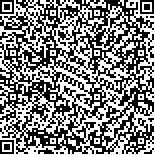关晨霞、郭钢花、李哲.不同频率低频重复经颅磁刺激对有癫痫发作史的颅脑损伤患者认知功能的影响[J].中华物理医学与康复杂志,2016,38(5):349-352
扫码阅读全文

|
| 不同频率低频重复经颅磁刺激对有癫痫发作史的颅脑损伤患者认知功能的影响 |
|
| |
| DOI: |
| 中文关键词: 颅脑损伤 经颅磁刺激 认知功能 癫痫 |
| 英文关键词: Trauma Brain injury Transcranial magnetic stimulation Cognition Epilepsy |
| 基金项目: |
|
| 摘要点击次数: 3660 |
| 全文下载次数: 5252 |
| 中文摘要: |
| 目的 观察0.5Hz和1.0Hz重复经颅磁刺激(rTMS)对有癫痫发作史的颅脑损伤患者认知功能的影响。 方法 选取60例有癫痫发作史的颅脑外伤患者,按随机数字表法分为0.5Hz组、1.0Hz组和对照组,每组20例。3组患者均给予常规药物治疗和认知训练,在此基础上,0.5Hz组和1.0Hz组则分别给予0.5Hz和1.0Hz的rTMS治疗,对照组则给予假刺激治疗,共治疗4周。分别于治疗前和治疗4周后(治疗后),采用蒙特利尔认知评估量表(MOCA)、Rivermead行为记忆测验(RBMT)、符号划消测验对3组患者的认知功能进行评定,并统计3组患者治疗期间发生头痛和癫痫发作的人次。 结果 治疗期间,3组患者均无发生头痛的病例,0.5Hz组、1.0Hz组和对照组发生癫痫的人次分别为5、4和4例,组间差异无统计学意义(P>0.05)。治疗后,3组患者的MOCA和RBMT评分以及符号划消测验均有提高(P<0.05),1.0Hz组MOCA评分、RBMT评分和符号划消测验的划消精确度分别为(22.71±4.76)、(19.21±4.52)和(0.71±0.17)分,均高于对照组[(18.56±5.14)、(16.23±4.05)和(0.58±0.09)分],组间差异有统计学意义(P<0.05);1.0Hz组符号划消测验的工作效率[(0.34±0.13)分]高于对照组工作效率[(0.29±0.12)分],但差异无统计学意义(P>0.05);0.5Hz组的MOCA评分、RBMT评分、符号划消测验的划消精确度[(20.03±5.98)、(17.01±3.86)和(0.62±0.14)分]及工作效率[(0.31±0.11)分]均高于对照组,但组间差异无统计学意义(P>0.05)。 结论 1.0Hz的rTMS可明显改善有癫痫发作史的颅脑损伤患者的认知功能,且不增加癫痫发作的风险。 |
| 英文摘要: |
| Objective To observe the effect of low-frequency, repetitive transcranial magnetic stimulation (rTMS) at different frequencies on the cognitive function of traumatic brain injury patients with a history of epilepsy. Methods Sixty traumatic brain injury patients were randomly divided into a 0.5 Hz group, a 1.0 Hz group and a control group, each of 20. In addition to routine drug therapy and cognition training, the control group was given fake stimulation, the 0.5 Hz group was treated with 0.5 Hz rTMS, and the 1.0 Hz group was provided with 1.0 Hz rTMS for 4 weeks, eleven times per week. Before and after treatment, the cognitive function of all three groups was assessed using the Montreal cognitive assessment (MOCA), the Rivermead behavior memory test (RBMT) and a symbol cancellation test. The number of patients reporting headache or epilepsy during the treatment period was also counted. Results During the treatment, there was no headache case in any of the groups, and no significant difference was found in the occurrence of seizures. After the treatment, all of the measurements in all 3 groups had improved significantly. The average MOCA and RBMT scores in the 1.0 Hz group were all significantly better than those in the control group, but there was no significant difference between the 0.5 Hz group and the control group. The symbol cancellation test efficiency of the 1.0 Hz group was not significantly better than that of the 0.5 Hz and control groups. Conclusions Repeated 1.0 Hz transcranial magnetic stimulation can significantly improve cognition after traumatic brain injury among patients with a history of epilepsy without increasing the risk of seizures. |
|
查看全文
查看/发表评论 下载PDF阅读器 |
| 关闭 |
|
|
|